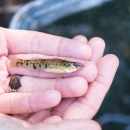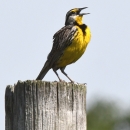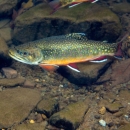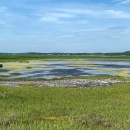Management and Conservation
Chesapeake Bay Watershed
Stretching from Cooperstown, New York, to Norfolk, Virginia, the Chesapeake Bay watershed supports a network of natural resources and communities that people and wildlife depend upon: streams, small creeks, and large rivers; forests, grasslands, and wetlands; agricultural lands, small towns, suburbs, and cities. The Chesapeake Bay is the waterfowl winter on and near the bay — approximately one-third of the Atlantic Coast’s migratory population. The birds stop to feed and rest during their annual migration along the Atlantic Flyway.
The ecological health of the watershed is also crucial to the health, well-being, and economic vitality of more than 18 million people who live and work in the region, many employed in industries tied directly to the watershed, like outdoor recreation, farming, and fishing. The bay produces about 500 million pounds of seafood each year, supporting jobs in both commercial and recreational fishing and bolstering the regional economy. In 2017, the commercial seafood industry in Maryland and Virginia contributed $3.2 billion in sales and provided 30,000 jobs (NOAA, Fisheries Economics). Hunting, sport fishing, and target shooting contribute an estimated $3.3 billion in economic value to the Chesapeake Bay region each year through sales of gear, licenses, clothing, gas, and more. Investing in projects that enhance the resiliency of fish and wildlife habitats helps ensure that these industries, jobs, and ways of life are sustainable in the long term (Southwick Associates, America’s Sporting Heritage)




